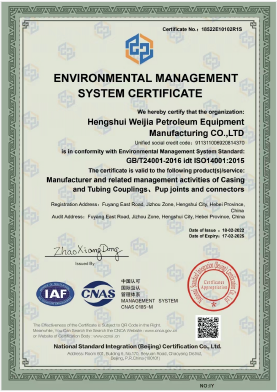- Afrikaans
- Albanian
- Amharic
- Arabic
- Armenian
- Azerbaijani
- Basque
- Belarusian
- Bengali
- Bosnian
- Bulgarian
- Catalan
- Cebuano
- Corsican
- Croatian
- Czech
- Danish
- Dutch
- English
- Esperanto
- Estonian
- Finnish
- French
- Frisian
- Galician
- Georgian
- German
- Greek
- Gujarati
- Haitian Creole
- hausa
- hawaiian
- Hebrew
- Hindi
- Miao
- Hungarian
- Icelandic
- igbo
- Indonesian
- irish
- Italian
- Japanese
- Javanese
- Kannada
- kazakh
- Khmer
- Rwandese
- Korean
- Kurdish
- Kyrgyz
- Lao
- Latin
- Latvian
- Lithuanian
- Luxembourgish
- Macedonian
- Malgashi
- Malay
- Malayalam
- Maltese
- Maori
- Marathi
- Mongolian
- Myanmar
- Nepali
- Norwegian
- Norwegian
- Occitan
- Pashto
- Persian
- Polish
- Portuguese
- Punjabi
- Romanian
- Russian
- Samoan
- Scottish Gaelic
- Serbian
- Sesotho
- Shona
- Sindhi
- Sinhala
- Slovak
- Slovenian
- Somali
- Spanish
- Sundanese
- Swahili
- Swedish
- Tagalog
- Tajik
- Tamil
- Tatar
- Telugu
- Thai
- Turkish
- Turkmen
- Ukrainian
- Urdu
- Uighur
- Uzbek
- Vietnamese
- Welsh
- Bantu
- Yiddish
- Yoruba
- Zulu
Understanding Casing Pup Joints in Oil and Gas Applications for Enhanced Performance
Understanding Casing Pup Joints in Oil and Gas Operations
In the oil and gas industry, the integrity and efficiency of drilling operations heavily depend on the quality and design of the casings used in wells. Among the various components of a casing string, casing pup joints play a pivotal role in enhancing operational flexibility and reliability. This article delves into the significance and applications of casing pup joints, exploring their design, function, and impact on drilling efficiency.
What is a Casing Pup Joint?
A casing pup joint is a short length of pipe that is used to connect the various sections of the casing string in a well. Typically ranging from 2 to 10 feet in length, pup joints serve as intermediaries that allow for the fine-tuning of the total length of the casing run. They are manufactured using the same material and dimensions as the casing being used, ensuring compatibility and maintaining the integrity of the wellbore.
Pup joints can be customized to meet specific requirements, such as varying lengths or a unique connection type. Their adaptability makes them an essential component in various drilling scenarios, particularly when precise casing lengths are crucial.
Applications of Casing Pup Joints
Casing pup joints are employed in a variety of applications within drilling operations. One of their primary uses is to adjust the total length of the casing string to accommodate different well designs. In situations where exact measurements are critical—such as in horizontal or deviated wells—pup joints provide the necessary adjustment without the need for additional long lengths of casing, saving both time and cost.
casing pup joint

Moreover, pup joints are useful in managing differences in casing sizes. In situations where the casing needs to transition from one diameter to another, pup joints facilitate this change smoothly. This feature is especially vital during re-entry into existing wells, where modifying the casing string is often necessary to adapt to the existing infrastructure.
Enhanced Drilling Efficiency
The incorporation of casing pup joints into drilling operations can lead to enhanced efficiency and improved overall performance. By allowing for precise adjustments in casing lengths, pup joints reduce the risk of complications during drilling and completion phases. This precision minimizes the chances of issues such as excess pressure in the wellbore or compromised structural integrity, which can lead to costly downtime and remedial measures.
Additionally, the use of pup joints streamlines the installation process. Since they are shorter than standard casing lengths, they can be handled more easily and installed more quickly. This reduction in installation time not only expedites the drilling operation but also lowers labor costs.
Conclusion
Casing pup joints are an integral component of modern oil and gas drilling operations. Their ability to provide flexibility, accommodate precise casing lengths, and enhance drilling efficiency cannot be overstated. As the industry continues to evolve, the role of pup joints will likely expand, further contributing to the optimization of drilling practices and the overall success of oil and gas extraction efforts.
In summary, while often overshadowed by larger casing components, casing pup joints offer vital advantages that underscore their importance in efficient well construction and integrity management. Understanding their applications and benefits can lead to more informed decisions in drilling methodologies, ultimately supporting the quest for efficient resource extraction in a competitive industry.
-
Tubing Pup Joints: Essential Components for Oil and Gas OperationsNewsJul.10,2025
-
Pup Joints: Essential Components for Reliable Drilling OperationsNewsJul.10,2025
-
Pipe Couplings: Connecting Your World EfficientlyNewsJul.10,2025
-
Mastering Oilfield Operations with Quality Tubing and CasingNewsJul.10,2025
-
High-Quality Casing Couplings for Every NeedNewsJul.10,2025
-
Boost Your Drilling Efficiency with Premium Crossover Tools & Seating NipplesNewsJul.10,2025







